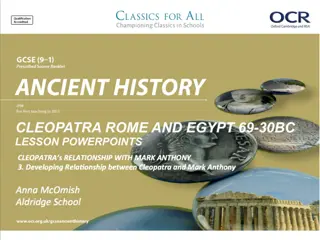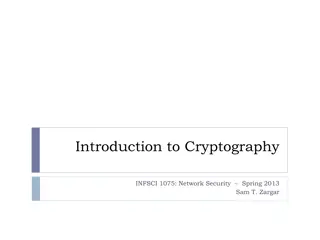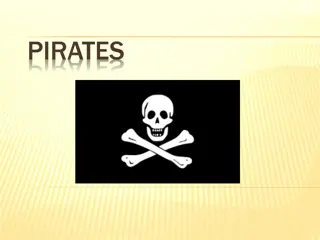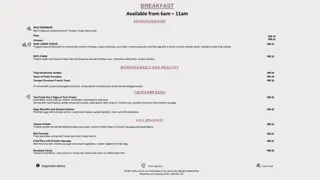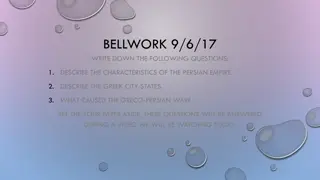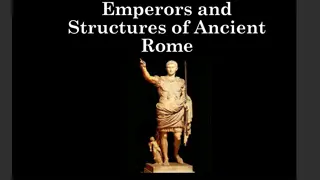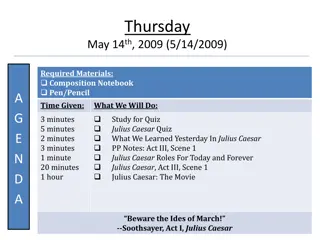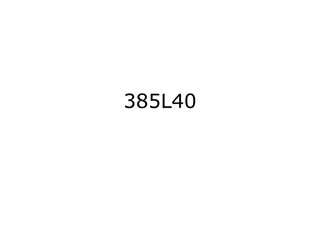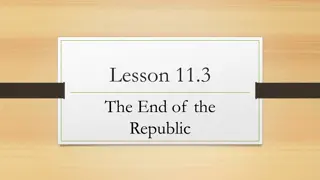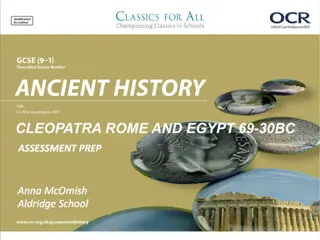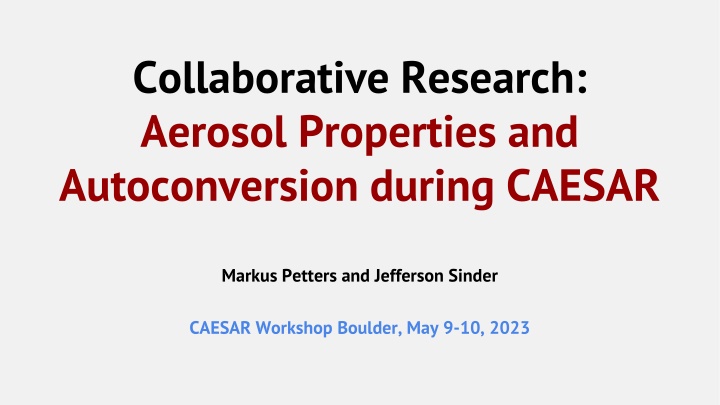
Collaborative Aerosol Research and Autoconversion Analysis in CAESAR Workshop 2023
Explore the collaborative research on aerosol properties and autoconversion mechanisms during the CAESAR Workshop in Boulder. Investigations involve testing hypotheses related to oceanic emissions, Arctic pollution, INPs in MBL clouds, and drizzle formation. Instrumentation and models are deployed to study these phenomena, with a focus on black carbon characterization and broader impacts on atmospheric processes.
Download Presentation

Please find below an Image/Link to download the presentation.
The content on the website is provided AS IS for your information and personal use only. It may not be sold, licensed, or shared on other websites without obtaining consent from the author. If you encounter any issues during the download, it is possible that the publisher has removed the file from their server.
You are allowed to download the files provided on this website for personal or commercial use, subject to the condition that they are used lawfully. All files are the property of their respective owners.
The content on the website is provided AS IS for your information and personal use only. It may not be sold, licensed, or shared on other websites without obtaining consent from the author.
E N D
Presentation Transcript
Collaborative Research: Aerosol Properties and Autoconversion during CAESAR Markus Petters and Jefferson Sinder CAESAR Workshop Boulder, May 9-10, 2023
We will contribute to testing of the following hypotheses H4a. Oceanic emissions are the primary CCN source. Test 1: Boundary layer CCN concentrations are low - Test 2: CCN roughly correlate positively with wind speed and negatively with precipitation rate - Test 3: Is there any particle formation within the CAO regime? H4b. The springtime Arctic free troposphere is often polluted as a consequence of long-range transport. Test 1: Contrast aerosol number, mass, CCN concentration, black carbon concentration, and coating thickness below, in-cloud, and directly above the CAO cloud regime. - Test 2: Quantify role of presence of black carbon particles that participate in droplet activation (CVI measurement). H4c. The major source of INPs for CAO MBL clouds is from the stratified free troposphere, dominating the sea surface source, except perhaps under strong winds (> 10 m/s). Test: Correlate black carbon and ice nucleating particle measurements in the MBL and FT to clarify the potential role of combustion aerosols from long-range transport on the CAO cloud regime. Hx. Drizzle water content in cloud updrafts is primarily controlled by thermodynamic state at cloud base and by subcloud CCN spectra and updraft velocity distributions. - Test: Evaluate the performance of a two-moment autoconversion scheme against observations. This measurement / model comparison will help constrain the role of sub-cloud CCN spectra and updraft distributions on drizzle formation. - - -
Example Black Carbon Characterization - - - Total number concentration rBC Mass/Size distribution rBC coating state Black carbon ageing in Houston, TX
UHAS, SMPS, CCN + Kappa/K hler Model
PDF(updraft) + Activation Model + Cooper (1989) UHAS, SMPS, CCN + Kappa/K hler Model
PDF(updraft) + Activation Model + Cooper (1989) UHAS, SMPS, CCN + Kappa/K hler Model Seifert and Beheng (2001) Prognostic two moment autoconversion model
Broader impacts: interactive learning content Petters, 2021, BAMS - We will collect video footage, weather maps, numerical weather predictions, and satellite loops collected during the campaign. We will record a joint set of instructional videos that introduce CAOs and aerosol-cloud-drizzle effects in CAOs and weave in interactive applets for incorporation as classroom modules -

